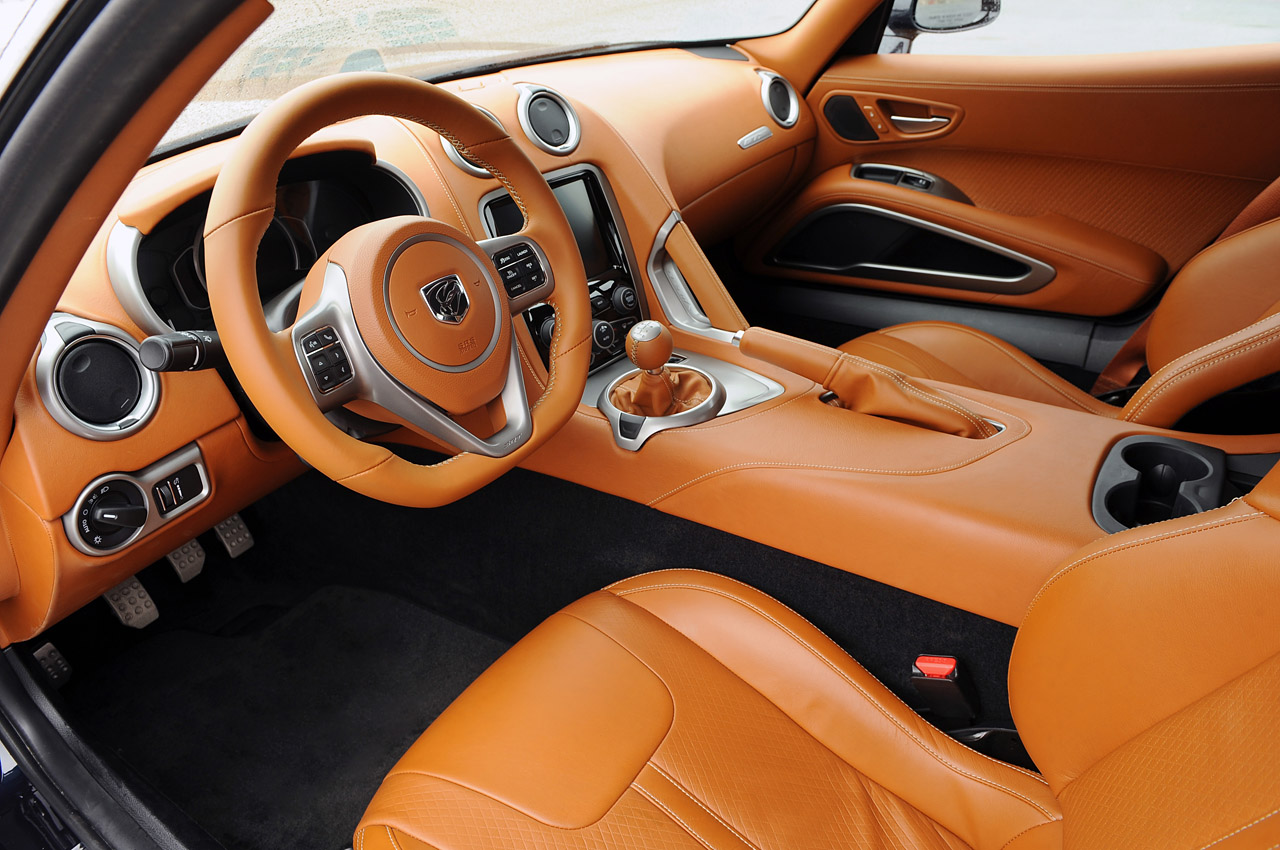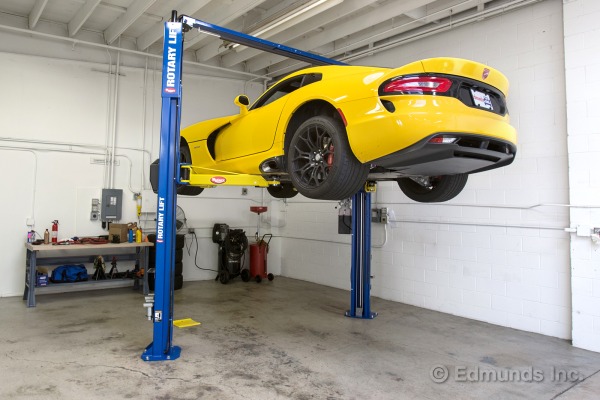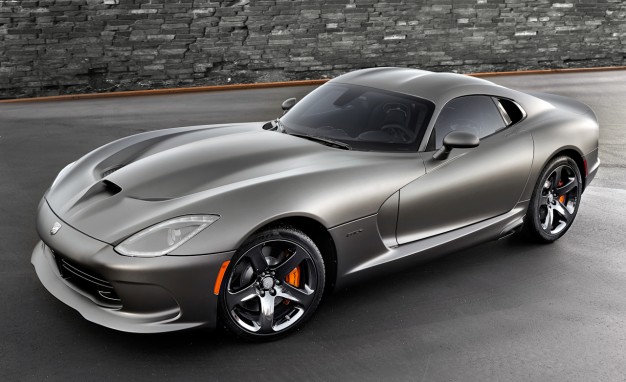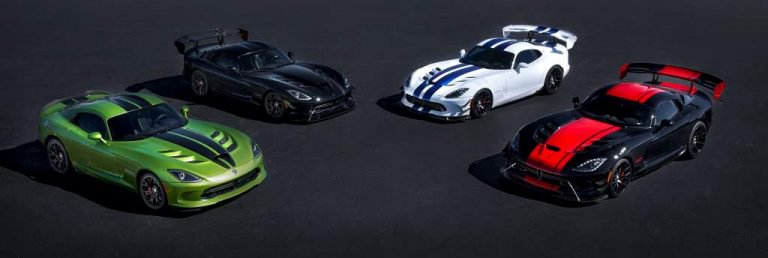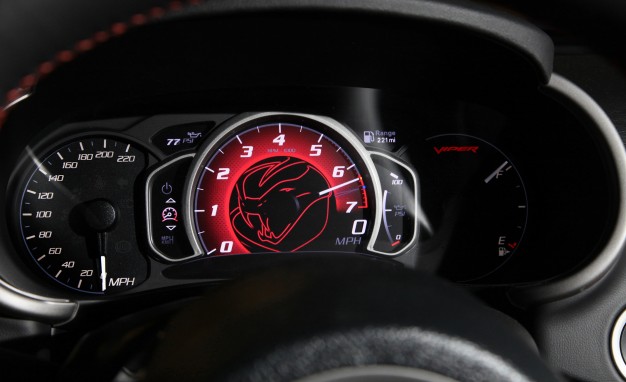A true beast. With a commanding beginning and a grand finale of an ending, the Dodge Viper is a force to be reckoned with in the realm of affordable exotics. Being one of the only American made cars to also wear an “exotic” badge, it’s not hard to see why. With a strict all manual transmission scheme, tremendous front end power, and an aggressive body type the Viper manages to keep up with it’s foreign friends as well as stand out.
The Vipers appeared as early as 1992 and carried on almost three decades before finally announcing their end of production after the year 2017. It wounded the hearts of American Muscle Lovers, but it gives the car a lasting legacy and the chance to appreciate in the years to come.
We are here to talk about the hackable though, not the unhackable…and while the early generation Vipers go for very cheap on the market, you only want to purchase the latest models of the Fifth Generation (Phase VX I) (2013-2017).
They are the new body style with and will hold value better than any of the other later phases. Some sit on the market now as low as $60,000 with reasonable miles/options, but that number is expected to rise as the new year comes in and people begin to look at these cars from a collector stand point.
Knowing what to buy is half the battle, but the next part is determining if the beast is right for you. Aesthetic wise, it is hard not to crane your neck when the Viper drives by. It alone emits a powerful roar down the highway, but it’s presence can’t be ignored.
Being the first Viper to have a completely upgraded body style, so of course the SRT design team came out of the box with a bang. The front of the Viper is aggressive as it’s name. The grill is barred on the front, with a low sitting lip and air vents on either side of the car, all that power needs as much air cooling as it can get. With Xenon headlights with LED running lamps contoured in the most angry like fashion. Above sit the hood scoops/vents, depending on trim there will be anywhere from 3 (SRT base) to 7 (ACR/GTC)…The more, the merrier, the higher trim levels mean more engine power which means more need to be air cooled.
The stripes the entire length of the car have been a heritage design since the very beginning with the Viper, and are sought after on a resale standpoint over base colors. Perhaps the most intimidating part of the Viper is its elongated front end where it houses its powerful engine. All the weight primarily is in the front of the car and that calls for an intense driving experience. But we will talk about that later. The windshield is however not designed with the drivers control in mind, higher than the drivers seat, scrunched to the size of the small cabin len and a downward angle allow for decent visibility.
Along the sides, the sleek and aggressive feel carries on, but adds an aerodynamic feel thanks to the side vents tucked up towards the side mirrors. The wheels come stock at 18’s in the front and 19’s in the back to compensate with the rear wheel drive transmission. The low hanging cabin is designed to give the driver more of that race car feel, but unfortunately all it does is force anyone over six feet tall to crane their neck a little with every drive. Perhaps one of the worst design elements of the viper is its exhaust placement. Rather than two rear tailpipes to discharge the heat radiated out of the engine, dodge thought it to be more fitting they place one on each side of the cabin doors. Right where one exiting the car would swing their legs… Not safe, not smart, not right.
And to the rear is a basic rounded off design with a mini spoiler to help with some downforce here and there, but not much. The Viper badge is crested again and below it sits the two oval shaped taillights that occupy most of the rear. And two more air vents sit where the exhaust SHOULD be, better cooling technology for the win.
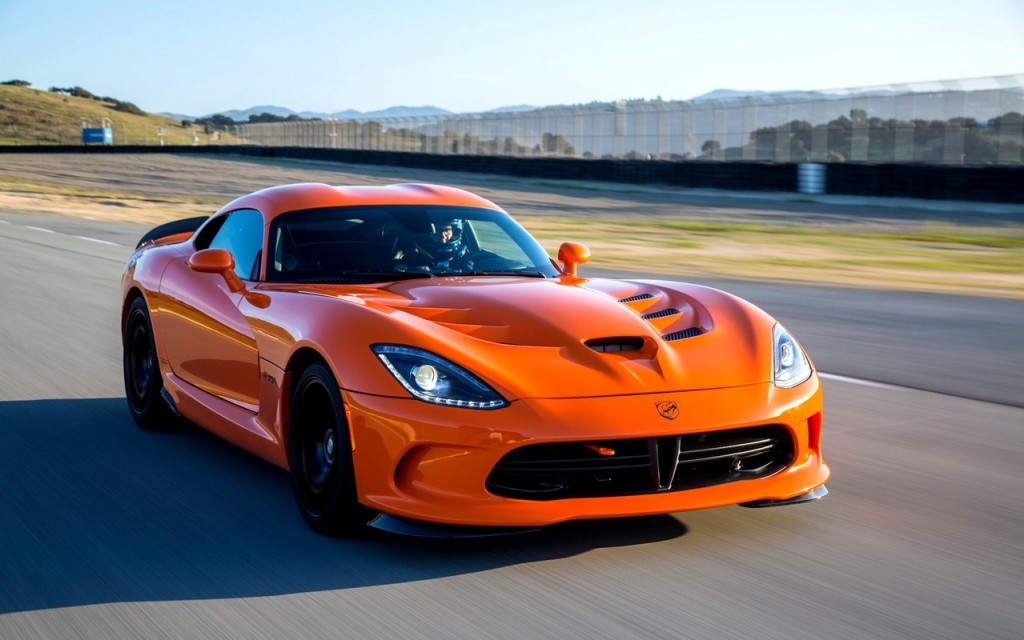 Dodge Viper Driving Experience
Dodge Viper Driving Experience
The best way to describe driving a Viper is to imagine you were on the wings of a bat coming right out of hell. Even some of the most skilled drivers have described this beast as one of the most difficult to handle cars out there. Though the latest generation was designed more with a “toned down style” they missed the mark completely. The older generations were by far more hot to handle thanks to lack of advanced technology in the handling and suspension field, but it’s only gotten better and more thrilling with time. Technology grew, so advancements were made for the Viper to handle all of it’s commanded power better in the mechanics aspect, but the beast was bread to be a powerhouse, so it’s only fitting that the engine bay grew too.
The Fifth Gen Viper is equipped with a 8/4 liter V-10 engine that is able to created 640 horsepower along with 600 pounds of torque. A fair equation of power for such an immensely intense driving experience. The best way I ever heard a Vipers driving style described was “it’s like being in a bar fight—brutal, violent, and loud, but undeniably exciting.”
With a rear wheel drive drive-train and almost all of it’s engine weight sitting at the very front, the Viper must be controlled otherwise it will control you. It being only available in a six speed manual automatically wades out the inexperienced drivers. And the fact it can get from 0-60 in just a bit over 3 seconds with a top speed of 206 mph is enough to scare any novice shifter away. The gas prices aren’t for the faint of heart either… with 12 mpg city and 19 mpg highway, you’ll be seeing a lot of the pump in your future.
The Fifth Generation is the first gen to come with electronic stability control, which allows the driver to chose the suspension/transmission feel when traction control is slim to none. There are also two other sport suspension modes: “Touring” which is the suggested mode of basic travel, unless you flick it into “Sport” in which case, hold on tight and try not to wrap yourself around a tree while you fly through the neighborhood. And if that wasn’t enough, the Viper has a launch control to better assist the beast when it is out on the track where it belongs.
As for the interior of the Viper, you’re looking at a very simple design. It has the practicality of most American cars, lacking the stylish edge and refinement that you find on it’s exotic counterparts: Ferrari/Lamborghini. It is driver orientated with the shifter angled slightly more to the left. The instrument panel behind the steering wheel controls gauges the driver should be concerned with: temperature, speedometer, gas level, odometer, etc. The race angled steering wheel is a flat bottom to allow a better hold, but it is still far from the best designed out there (personally I think the new NSX had the best steering wheels out there.) The controls showcase mainly radio functions on the right hand and instrument panel controls on the left. In the center console you find the Connect 8.4 inch touch screen. It is where you’ll find your navigation and performance pages. Everything from engine, transmission, oil temperatures, and more can all be at your finger tips. It is fun to mess with but also useful as the Viper is known for emitting a lot of heat and its levels should always stay monitored. The sound system isn’t bad either, coming with the Harman Kardon 18 speak system, it’s the only thing that could tone down the roaring v-10 engine outside.
Cargo space in the Viper is few and far between inside the cabin. There is no center console space at all and the glove box is fairly small, only really useable for your necessary paperwork and documentation of the car. The trunk space however is a little larger, allowing for a small trip to the grocery store or a quick 9 holes of golf on a put put course.
So if you enjoy bar fights, intense scenarios, hot and heavy days with a lead foot and heavy shifting arm…the Viper is right for you. If you are looking for something to take to the track and give the big boys a run for their money in a car a quarter of the price…the Viper is your car. But if you are looking to take the kids out to the park for a nice picnic…I would advise against it.
Dodge Viper Common Problems
One splendid thing about the Viper is that it is indeed a Dodge…which means it’s American plastic and parts are EXTREMELY cheap. Thank goodness. And perhaps that is why for the Fifth Generation there are very little recalls for any of the models: SRT/GTS/ACR.
The two biggest recalls however effect our Fifth Generation Viper in a big way and need be addressed ASAP before any purchase is made. The recalls were issued in 2015 and are labeled as R28 and R29. Along with a few other smaller recalls being issued to the early 2013-2014 SRT models.
Recall R28: The engine block in these specific cars is more susceptible to contamination of debris, which can result in total engine failure and would need an entire engine block replacement.
Recall R29: Oil seems to be forced into the Make Up Air Hose (MUA) at higher speeds and higher rpms. Fixing that called for a new oil management system and valve cover assembly as well as relocating the MUA.
Recall R40: This recall calls for a reprogramming of the radio software as there seems to be a lack of security in the programming that leaves these Vipers open to hacking where someone could manually go in through the system and alter driving functions such as engine controls, brakes, interior/exterior locks, and even steering.
Recall for Water Damage: The 2013-2014 Vipers are effected. If moisture gets into the door switch, the driver or passenger door could open unexpectedly while the vehicle is in motion.
Recall for Seat Position Sensors: The 2013-2014 SRT models had ill placed sensors which could cause the airbags to deploy at a lower velocity.
High Oil Consumption: we can thank the way the Viper emits massive amounts of heat for this common issue. While it isn’t with every car, it is something to keep an eye out on when driving at higher speeds for longer periods of time.
Dodge Viper Cost of Ownership/Maintenance
While the Viper is an American car, blessing you with somewhat lower maintenance costs, it still wears an exotic badge which will always cost you a little more on the back end. Dodge gifted it’s Fifth Gen Viper the same warranty as it’s other muscle cars (challenger/charger) 3yr/36,000 mile basic and a 5yr/100,000 mile powertrain. But as far as everyone is concerned these are some of the most easy going and problem free cars that you can find anywhere on the market.
The thing is a gas guzzler so get ready to empty your wallet a few times a week if you are using this beast as your daily driver. The Viper comes stock with Pirelli racing tires, but anyone and everyone who knows cars knows that Pirelli’s are not cheap but they are the best of the best for a car like this, especially on track days. So cough up the extra $1,000 or so Tires are especially important to cars like this so don’t be stingy. The oil is also nothing new to you all either, go for the best of the best, always synthetic. And unlike McLaren’s anyone can work on Vipers as the bond all the same parts as other Dodge, Chryslers, and Jeeps. But just because anyone can work on these cars doesn’t mean just anyone should. Be selective of the shops you use and who you let touch your pride and joy.
Always keep in mind, if you are taking your Viper into it’s natural habitat on the track, you need to keep up with the maintenance that comes with all race cars. Tires, brakes, fluids, and beams/rods. So be sure to have a shop you trust on hand any time after you enjoy a run or two. The Viper is a beast on the track but it can be a burden in your bank account if you neglect her after she worked hard for you.
Dodge Viper Model Year Changes
The Viper has a long and proud heritage and it is so sad to see it come to an end, but it will never be forgotten in the eyes of every car enthusiast young or old.
This guide is set to focus on the Fifth Generation only and seeing as the massive changes weren’t made between it’s production years of 2013-2017, allow us to speak on the trim levels that grace the class.
- SRT (Base)
MSRP: $90,000 The Viper we have been using this guide off of, a beast in it’s own right even without all the upgrades and flashy body kits. It can get the job done and still turn heads while doing it.
- GT
MSRP: $97,995 This Viper has the added carbon fiber hood, upgraded leather and alcantara interior, two mode suspension, five mode stability control, colored seatbelt, and a taller sixth gear ratio.
- GTS
MSRP: $110,100 This Viper is our favorite for the ECH methods. It has been upgraded to full laguna leather interior, Harman Kardon audio system, red calipers, stop tech two-piece rotors, black wheels.
- ACR
MSRP: $120,895. This is the beast of the beasts. The ACR is the true track king of the four models and even the five generations. The ACR is most differentiated by an upgraded six slate hood, a massive rear wing, along with its own interior and exterior trimming. High-grip leather seats, a three-speaker audio system, bigger brakes, a manually adjustable coilover suspension w/ Bilstein racing shocks and ten ride settings, along with its own unique trim tires and wheels.
And the 2017 Heritage edition Vipers were made in five different versions. Four of which are based on the ACR and only one is based off the GTS. The five include:
- Viper 1:28 ACR- Black with a red stripe, new aerodynamic body pack, carbon EVERYTHING. With the name paying homage to the Dodge Viper ACR Laguna Seca lap time of 1:28:65 (28 units)
- Viper GTS-R Commemorative Edition ACR- Heritage colors of white with blue stripes, ACR aerodynamic pack, carbon ceramic brakes, carbon interior/exterior pack, and ACR interior. (100 units)
- Viper Snakeskin Edition GTC- The Viper Metallic Lime Green paint, SRT striping, aerodynamic package, and GT interior. (25 units)
- Viper Voodoo II ACR- black and red paint. Carbon ceramic brakes, aerodynamic package, ACR interior, commemorative plaques. (31 units)
- The Dodge Dealer Edition ACR- Only available for purchase through the top two Dodge dealers in the country, able to be spec’d fully to the customers desire. (33 units)
Dodge Viper Options
Dodge believed that if it wasn’t broke, to not fix it. Its design element was spectacular for what it was and never needed anything extra. The Viper was also created to be the affordable race car that people wanted, so why waste time creating thousands of options that cost thousands of dollars on their own. But when building your own Viper, you could still have some fun here and there.
Take a look at the full options list for a 2013 SRT Viper here.
But Dodge did break their rule when it came time to say goodbye to it’s beast. The 2017 Vipers came fully optional for the special buyers to create on their own. See for yourself the mass amounts of options Dodge gave its monster for it’s farewell here.
Best Year To Buy A Dodge Viper
While any of the Fifth Generations are a good bet to buy based on a resale standpoint, the 2016-2017 have not depreciated enough to be hackable. And massive depreciation is not in the brand’s future any time soon. The Vipers will more than likely begin to appreciate slowly but surely over the next coming decades as they will be heritage pieces to muscle car fans and drivers alike.
If you are looking to take the Viper for a drive on the ECH side of things, you’ll want to stick with the 2013-2015 in the GTS trim with miles no higher than 20,000. The GTS has the upgraded suspension, wheels, and interior, which make it more desirable than the SRT or GT from a resale standpoint. And the GTS is much easier to handle than the fully equipped ACR.
Conclusion
There is no car out there than can compete with the Viper in the price range it sits at now. Not no way not no how. You are getting a track-ready monster for just $75k that has little to no maintenance problems, cheaper parts to fix, a long and proud heritage, strong driving power, massive neck-breaking ability, and an upside for an appreciating asset. The Viper started with humble beginnings and ended up being a total badass to anyone and everyone who saw it. When a car has been around as long as the Viper has, you can assume that it has been for a reason. The Fifth Gen that we are advocating for brings all the best elements of the Viper legacy together in one car that you could own without spending an arm and a leg. So if you have what it takes to control the beast that is the Viper, you might just get the absolute ride of your life.


